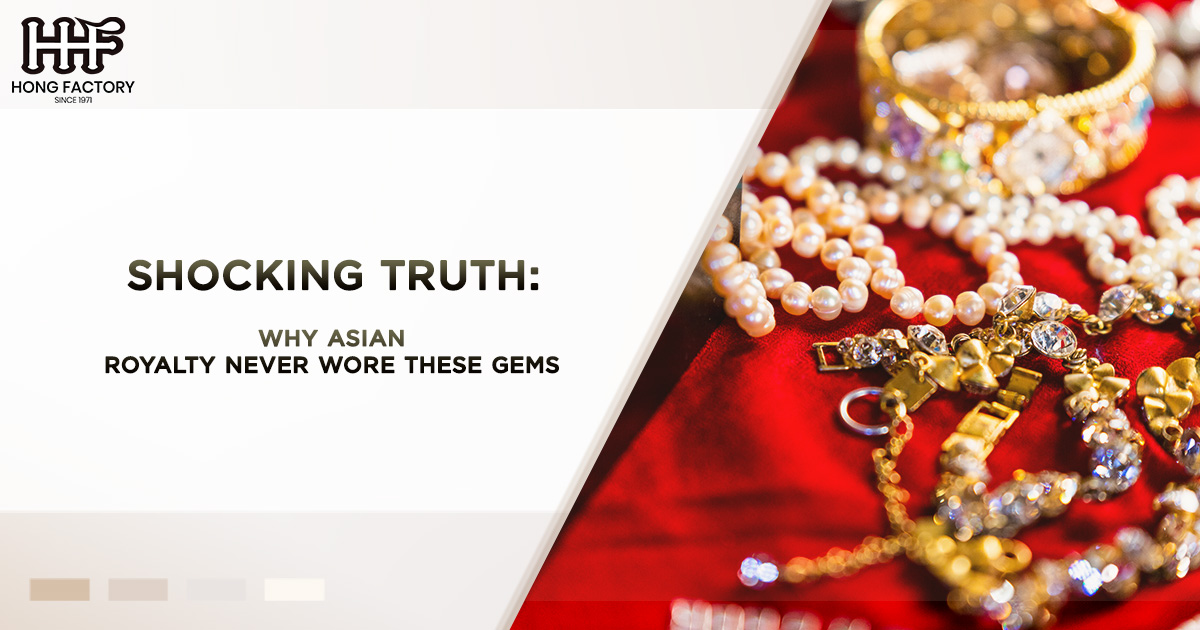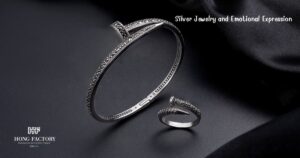
Throughout history, royal jewelry has been a symbol of power, status, and cultural identity, especially in Asia, where monarchs and rulers adorned themselves with some of the world’s most exquisite treasures. Yet, despite their opulence, there existed an intriguing and often shocking truth: certain gems were deemed forbidden or avoided altogether by Asian royalty. These prohibitions were not based on aesthetics but were deeply rooted in cultural taboos, historical incidents, and beliefs that shaped the perception of gems within royal courts. In this article, we delve into the enigmatic world of forbidden gems in Asian culture, unraveling the superstitions and historical underpinnings that dictated what royalty dared—or refused—to wear.
The Symbolism of Royal Jewelry in Asian Culture
In Asia, jewelry has always held a profound significance beyond its material value. For centuries, it served as a visual language that communicated a ruler’s divine authority, connection to the cosmos, and alignment with the spiritual world. Gems were imbued with symbolism, believed to influence fate, health, and fortune. For instance, emeralds were thought to bring clarity and foresight, while rubies symbolized power and vitality.
However, alongside this reverence for gems, there existed a parallel belief system that viewed certain stones as harbingers of misfortune or carriers of negative energy. In Asian royal courts, where appearances were meticulously curated and spiritual balance was paramount, these forbidden gems were strictly avoided, lest they disrupt the harmony of the ruler’s reign.
Cultural Taboos and the Fear of Forbidden Gems
The Curse of Pearls in Chinese Dynasties
While pearls are often celebrated for their timeless elegance, they carried a complex and somewhat paradoxical symbolism in traditional Chinese culture. Although pearls were prized as treasures of the sea and symbols of purity, they were also associated with tears and sorrow. This duality created a cultural taboo among Chinese royalty, who believed that wearing pearls too frequently could invite personal tragedy or misfortune.
Historical records suggest that Empress Dowager Cixi, one of the most influential figures of the Qing Dynasty, wore pearls sparingly despite their popularity during her reign. This restraint was likely influenced by a superstition that pearls, when worn in excess, could lead to family discord or the untimely death of loved ones. As a result, while pearls were admired, they were often avoided in daily royal attire, particularly during significant ceremonies.
Opals : A Stone of Ominous Reputation

Opals, with their mesmerizing play of color, were another gemstone that Asian royalty approached with caution. In many Asian cultures, the opal was believed to harbor an unstable energy due to its shifting hues. This perception was tied to the belief that opals could amplify both positive and negative emotions, making them unpredictable and potentially dangerous.
In the Mughal courts of India, for example, opals were rarely seen in royal jewelry collections. The Mughals, known for their opulent adornments and affinity for gemstones like diamonds, rubies, and emeralds, avoided opals because they were thought to bring about sudden changes in fortune. Indian astrologers of the time warned that wearing opals could incite envy among the gods, leading to a ruler’s downfall.
Historical Incidents That Reinforced Superstitions
The Sapphire Scandal in Japan’s Imperial Court
One of the most fascinating historical incidents involving forbidden gems occurred in Japan’s imperial court during the Heian period (794–1185). Sapphires, which are now widely regarded as symbols of wisdom and virtue, were once shrouded in controversy in Japan. According to court chronicles, an emperor who commissioned a sapphire-encrusted crown experienced a series of calamities shortly after donning the piece. These included natural disasters, political uprisings, and personal illness.
As a result, sapphires were temporarily banned from imperial regalia, and the incident cemented the belief that certain gems could invite divine wrath. Although sapphires later regained their status as a cherished gemstone, the episode left a lasting impression on Japan’s collective consciousness regarding jewelry superstitions.
The Jade Dilemma in Ancient Korea
Jade, often considered the most sacred stone in East Asian cultures, was not immune to controversy. While jade symbolized purity, harmony, and immortality, its improper use was believed to bring misfortune. In ancient Korea’s Joseon Dynasty, there was a strict protocol governing who could wear jade and in what form. Violating these rules was thought to disrupt the cosmic order, leading to chaos within the kingdom.
One notorious incident involved a court official who gifted a jade ornament to the queen without consulting the royal astrologers. Shortly afterward, a series of political scandals erupted, and the queen fell gravely ill. The incident was interpreted as a warning from the heavens, reinforcing the belief that jade, despite its revered status, needed to be handled with utmost care and reverence.
Spiritual Beliefs and Astrological Influences
Astrology played a significant role in shaping attitudes toward gemstones in Asian royal courts. Many rulers consulted astrologers to determine which gems were auspicious for their birth charts and which should be avoided. This practice was particularly prevalent in India, where the Navaratna (a sacred arrangement of nine gemstones) was used to align the wearer with cosmic forces.
However, even within this revered system, certain gems were excluded based on their astrological incompatibility. For instance, the blue sapphire (representing Saturn) was considered perilous for individuals whose horoscopes indicated a weak Saturn. Similarly, black stones, regardless of their beauty, were often avoided by Asian royalty due to their association with negative energy and death.
In Thailand, where the monarchy has long been intertwined with Buddhist beliefs, gemstones were selected not only for their beauty but also for their spiritual resonance. Gems that were thought to clash with a ruler’s spiritual aura were strictly forbidden, as their presence could disrupt the delicate balance between the material and spiritual realms.
Jewelry Superstitions That Persist Today
While modern monarchs and jewelry enthusiasts may no longer adhere strictly to ancient taboos, many of these beliefs continue to influence Asian culture. In contemporary China, pearls are still associated with tears, and brides are often discouraged from wearing them on their wedding day. Similarly, opals remain a controversial choice for engagement rings in parts of Asia, despite their growing popularity in the West.
Even in the world of high fashion and luxury, jewelry superstitions persist. Designers and jewelers catering to Asian markets are often mindful of cultural sensitivities, avoiding certain stones or incorporating them in ways that honor traditional beliefs. This enduring connection between royal jewelry and cultural taboos serves as a testament to the deep-rooted influence of history and spirituality on the world of gems.
Conclusion – The Legacy of Forbidden Gems in Asian Royalty
The story of forbidden gems in Asian royalty is a captivating blend of history, culture, and mysticism. It reveals how deeply intertwined gemstones are with the values and beliefs of a society, shaping not only personal adornment but also the legacy of entire dynasties. From pearls that symbolized sorrow to opals that evoked fear, these taboos offer a glimpse into the intricate relationship between humanity and the natural world.
As we marvel at the splendor of royal jewelry, it is worth remembering that these treasures are more than mere ornaments. They are vessels of meaning, tradition, and, at times, cautionary tales. The forbidden gems of Asia remind us that even the most beautiful creations of nature can carry a weight of mystery and superstition, shaping the destinies of those who dare to wear them.










